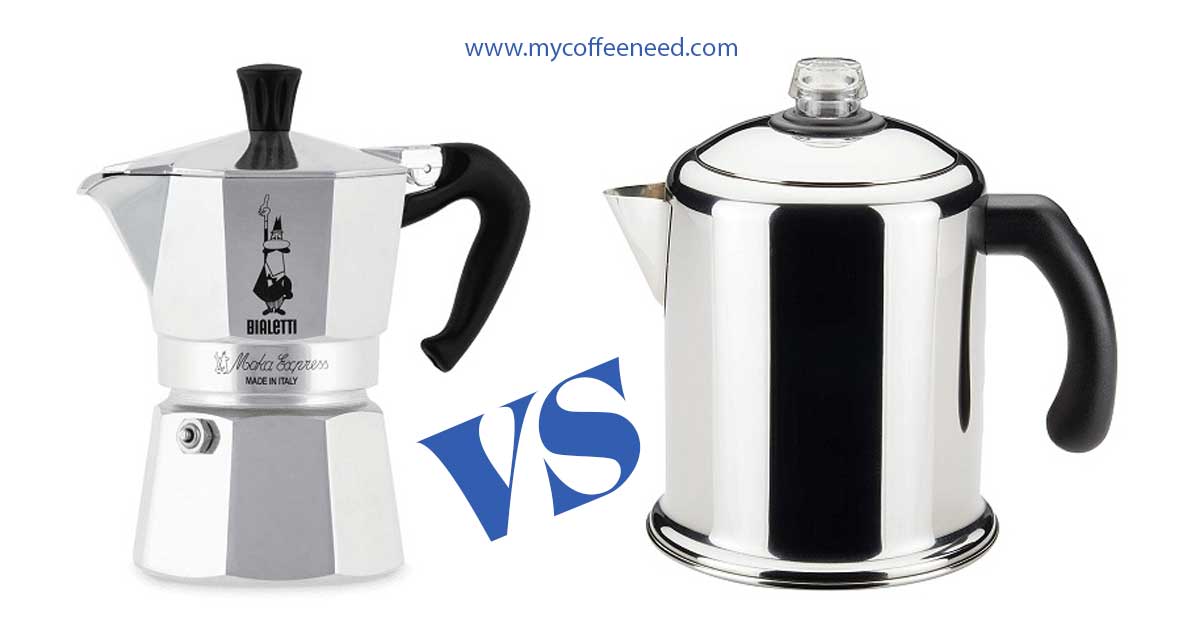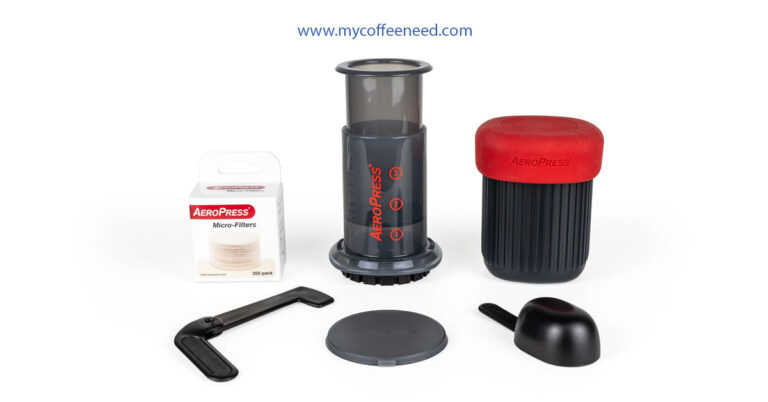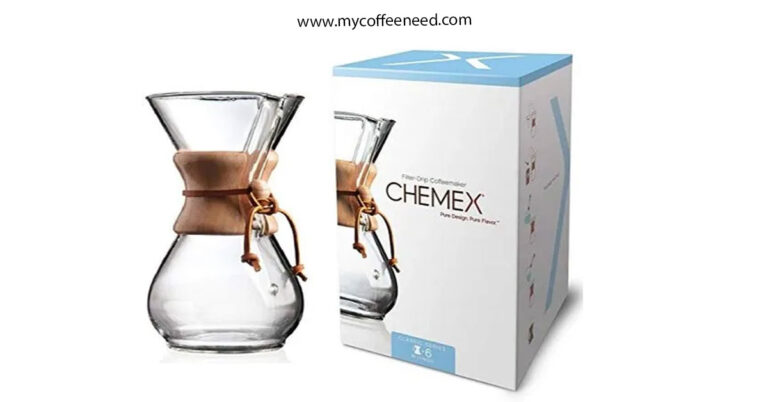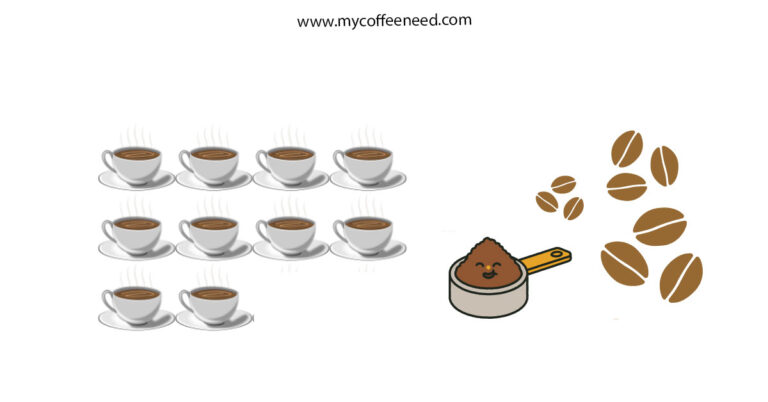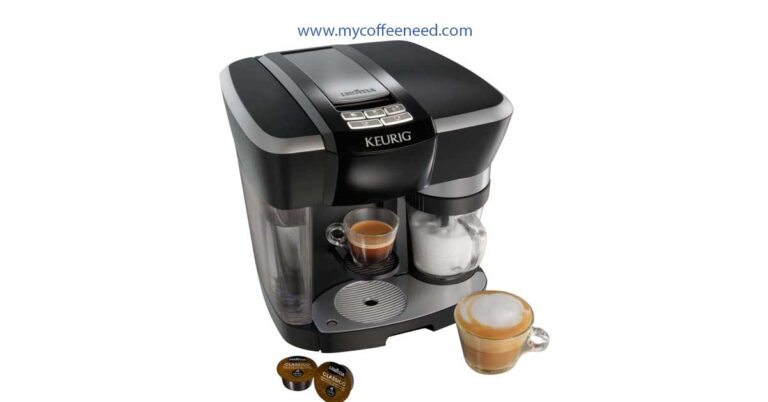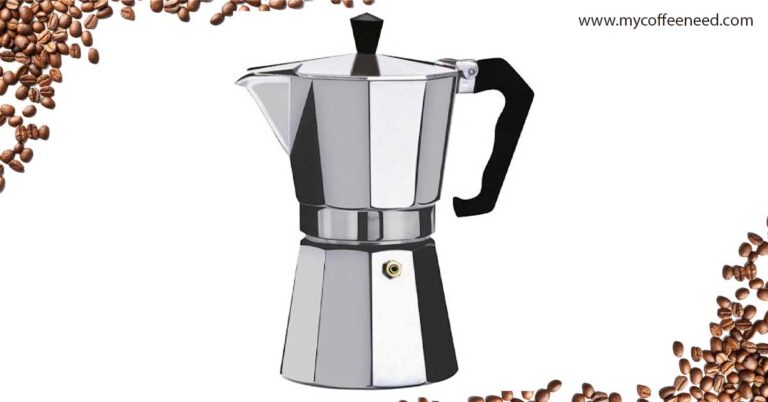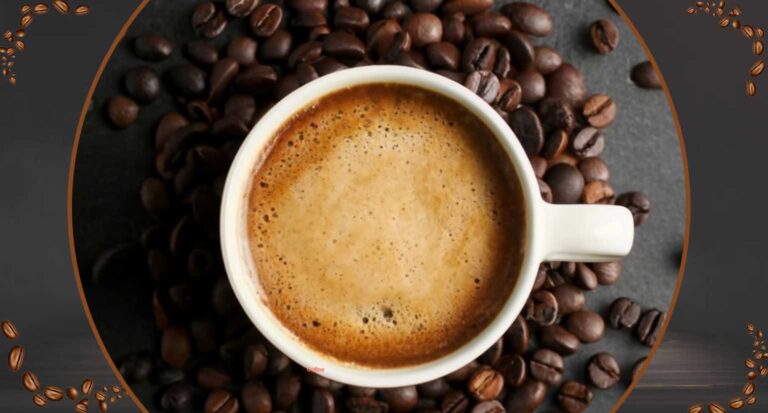Coffee Percolator vs Moka Pot
An Overview of Coffee Percolators and Moka Pots
Coffee percolators and moka pots are two of the most popular brewing methods for coffee lovers. A coffee percolator is a type of stovetop espresso maker that uses a filter basket to hold the ground coffee and a bottom chamber to hold the hot water. The brewing process involves the hot water being forced up a tube and over the ground coffee, and then back down into the lower chamber, where it is then ready to be served. Electric percolators are also available, and they work in a similar way, but with an electric heating element instead of a stovetop.
Moka pots, also known as stovetop espresso makers, are a great way to make espresso-like coffee without the need for an espresso machine. The Moka pot consists of three chambers: a lower chamber for cold water, a middle section for ground coffee, and an upper chamber for brewed coffee. The key difference between a moka pot and a coffee percolator is that the moka pot uses steam pressure to force the hot water through the ground coffee, while the percolator uses gravity.
The major difference between a moka pot and a drip coffee maker is the grind size. For a moka pot, you will need a coarser grind than for a drip coffee maker. This is because the moka pot requires a lot of pressure to force the hot water through the ground coffee, and a finer grind will not allow enough pressure to build up.
Alfonso Bialetti, an Italian engineer, is credited with inventing the moka pot in 1933. Since then, the moka pot has become one of the most popular ways to make coffee. It is easy to use, and it produces a delicious cup of coffee with a strong flavor.
When it comes to making coffee, the best moka pot is a matter of personal preference. Some people prefer the convenience of an electric model, while others prefer the traditional stovetop percolator. Both methods produce a delicious cup of coffee, but the end result will depend on the type of coffee beans used, the grind size, and the brew time.
For those who want to make large batches of coffee, a percolator is a great option. It is also a good choice for those who prefer a strong cup of coffee. However, for those who prefer a lighter roast, a moka pot is a better choice.
When it comes to making espresso-like coffee, the main difference between a moka pot and a French press is the pressure. A moka pot uses bars of pressure to force the hot water through the ground coffee, while a French press uses only the pressure of the steam. The moka pot produces a much stronger cup of coffee than a French press, but it also takes longer to brew.
No matter which type of coffee maker you choose, it is important to take proper care of it. Cleaning the coffee maker regularly and using the correct grind size will ensure that you get the best cup of coffee every time. With the right equipment and a little bit of practice, you can make a delicious cup of coffee with ease.
The Differences in Brewing Processes Between Coffee Percolators and Moka Pots
Brewing coffee is an art form, and coffee lovers have a variety of methods to choose from when it comes to creating the perfect cup. Two of the most popular brewing processes are percolators and moka pots. While both methods can produce delicious coffee, there are some key differences between the two.
Percolators are a type of stovetop espresso maker that use hot water to extract flavor from ground coffee beans. This type of coffee maker is available in both electric and stovetop models. Electric percolators have a filter basket at the bottom of the pot, where the coffee grounds are placed. Hot water is then pumped up through the grounds and into the upper chamber, where the brewed coffee is collected. Stovetop percolators work similarly, but the water is heated on the stovetop rather than by an electric heating element.
Moka pots, also known as stovetop espresso makers, are a great way to make espresso-like coffee without an espresso machine. This type of coffee pot consists of three chambers: a lower chamber that holds cold water, a middle section with a filter basket for the ground coffee, and an upper chamber where the brewed coffee is collected. To brew coffee with a moka pot, the lower chamber is filled with cold water and the filter basket is filled with a coarser grind of coffee than what is used in a drip coffee maker. The pot is then placed on a heat source, such as a stovetop, and the boiling water creates steam pressure that forces the hot water up through the grounds and into the upper chamber.
The major difference between percolator coffee and moka pot coffee is the strength of the brew. Percolator coffee is usually stronger than moka pot coffee, and the type of coffee grind used will also affect the strength of the brew. Coffee grinds for percolators should be finer than those used for moka pots.
When it comes to ease of use, moka pots are generally easier to use than percolators. Moka pots also make larger batches of coffee than percolators, making them a great option for those who want to make coffee for a crowd.
The end result of both brewing processes is a delicious cup of coffee. Ultimately, the best choice between percolator coffee and moka pot coffee comes down to personal preference. Coffee enthusiasts may want to experiment with both methods to find the best coffee for their taste.
The Pros and Cons of Using a Coffee Percolator
A coffee percolator is a great way for coffee lovers to make delicious coffee. It is a type of stovetop espresso maker that is used to brew coffee by passing hot water through ground coffee in a filter basket. The major difference between a percolator and a drip coffee maker is that the percolator recirculates the hot water through the grounds until the desired strength is reached. This process is known as percolation.
Percolators come in both electric and stovetop models. The stovetop percolator consists of three chambers: a lower chamber for the water, a middle section for the filter basket, and an upper chamber for the brewed coffee. The electric percolator is similar, but it has an additional heating element in the lower chamber.
The main difference between a percolator and an espresso machine is the amount of steam pressure used to brew the coffee. A percolator does not use steam pressure, but instead relies on the boiling water to extract the flavor from the coffee grounds. This makes it a great option for those who prefer a strong cup of coffee.
Alfonso Bialetti, an Italian engineer, is credited with inventing the first stovetop coffee percolator in 1933. His design, the Bialetti Moka Express, is still one of the most popular ways to make coffee today.
When using a percolator, it is important to use a coarser grind of coffee than you would for a drip coffee machine or French press. The coarser grind will help ensure that the water passes through the grounds quickly and evenly. It is also important to use cold water, as hot water can cause the coffee to become bitter.
The brewing process for a percolator is fairly simple. First, fill the lower chamber with cold water and place the filter basket in the middle section. Add the ground coffee to the filter basket and place the upper chamber on top of the percolator. Place the percolator on a heat source, such as a stovetop or induction stove, and allow the water to come to a boil. Once the water reaches the boiling point, the steam pressure will force the hot water up through the grounds and into the upper chamber, where it will be collected as brewed coffee.
Percolator coffee is a great way to make large batches of coffee quickly and easily. It is also a great option for those who prefer a strong cup of coffee. The end result is a delicious cup of coffee that is much stronger than drip coffee or French press coffee.
Overall, the pros of using a coffee percolator include ease of use, the ability to make large batches of coffee quickly, and the strong cup of coffee that it produces. The cons include the need to use a coarser grind of coffee and the possibility of bitter coffee if the water is too hot. Ultimately, the best type of coffee maker for you will depend on your personal preference and the type of coffee you prefer.
The Pros and Cons of Using a Moka Pot
The Moka Pot is a stovetop espresso maker invented by Italian engineer Alfonso Bialetti in 1933. It is a great way for coffee lovers to make a delicious cup of espresso-like coffee without an espresso machine. It is also much easier to use than an electric percolator or drip coffee maker.
The Moka Pot works by using steam pressure to force hot water from the lower chamber, through the ground coffee in the filter basket, and into the upper chamber. The result is a strong, delicious cup of coffee. The major difference between the Moka Pot and an espresso machine is that the Moka Pot does not use high pressure to extract the coffee.
When using a Moka Pot, it is important to use the correct grind size and amount of coffee. A coarser grind is best for a Moka Pot, as a finer grind can clog the filter basket. The amount of coffee should be adjusted depending on how much coffee you want to make. Generally, it is best to use about two tablespoons of ground coffee for every four ounces of water.
The brew time for a Moka Pot is much shorter than a drip coffee machine or electric percolator. Depending on the size of the Moka Pot, it can take anywhere from three to five minutes to brew a cup of coffee.
When compared to other coffee brewing methods, the Moka Pot is a great option for coffee enthusiasts. It is much easier to use than a French press or electric percolator, and it produces a much stronger cup of coffee than a drip coffee machine. The end result is a delicious cup of coffee that is similar to espresso.
Overall, the Moka Pot is a great way for coffee lovers to make a delicious cup of espresso-like coffee without an espresso machine. It is much easier to use than other coffee brewing methods, and it produces a strong cup of coffee that is sure to please any coffee lover.
The Impact of Coffee Percolators and Moka Pots on Coffee Flavor
Coffee percolators and moka pots are two of the most popular ways to brew coffee. Coffee percolators are a type of stovetop espresso maker that use hot water to extract flavor from coffee grounds. The brewing process involves the water being heated in the bottom chamber, and then being forced up through the filter basket, which contains the ground coffee. The hot water is then forced back down through the grounds, and the brewed coffee is collected in the upper chamber.
Moka pots, also known as stovetop espresso makers, are another great way to make delicious coffee. Unlike percolators, moka pots use steam pressure to extract flavor from the coffee grounds. The moka pot consists of three chambers: a lower chamber that holds cold water, a middle section that contains the ground coffee, and an upper chamber that collects the brewed coffee. The water is heated in the lower chamber until it reaches the boiling point, and the steam pressure forces the hot water up through the ground coffee and into the upper chamber.
The major difference between coffee percolators and moka pots is the grind size of the coffee grounds. For percolators, it is best to use a coarser grind, while for moka pots, a finer grind is recommended. The grind size will affect the end result of the coffee, so it is important to choose the right grind size for the type of coffee you are making.
Another key difference between the two is the ease of use. Electric percolators are a great option for those who want to make large batches of coffee quickly and easily. Moka pots, on the other hand, require more attention and care when brewing.
The moka pot was invented by Italian engineer Alfonso Bialetti in 1933, and has since become one of the most popular ways to make espresso-like coffee. It is a great way to make a strong cup of coffee with a rich flavor, and it is much easier to use than an espresso machine.
The main difference between coffee percolators and moka pots is the pressure used to extract flavor from the coffee grounds. Percolators use a lower pressure, while moka pots use a higher pressure. This difference in pressure affects the brew time and the end result of the coffee.
When it comes to personal preference, it is up to the coffee lover to decide which type of coffee maker is best for them. Both coffee percolators and moka pots are great options for making delicious coffee, and it really comes down to which type of coffee you prefer. For those who like a strong cup of coffee, a moka pot is a better choice, while those who prefer a lighter roast may prefer a percolator.
No matter which type of coffee maker you choose, it is important to use the proper care and maintenance to ensure that your coffee is as delicious as possible. For best results, use freshly ground coffee beans and a proper grind size for the type of coffee you are making. Additionally, make sure to use the correct amount of water and heat source for the best results.
Overall, coffee percolators and moka pots are both great ways to make delicious coffee. With the right care and maintenance, you can enjoy a delicious cup of coffee every time. Ultimately, it comes down to personal preference, so experiment with different brewing methods and find the one that works best for you.
The Effect of Coffee Percolators and Moka Pots on Caffeine Content
Coffee percolators and moka pots are two of the most popular brewing methods for coffee lovers. The major difference between the two is the type of coffee they produce. Percolator coffee is usually stronger and more robust, while moka pot coffee is often more espresso-like.
A coffee percolator is a stovetop espresso maker that uses a heat source to push hot water through a filter basket filled with ground coffee. The hot water is then circulated through the coffee grounds, producing a strong cup of coffee. Electric percolators are also available, but stovetop percolators are the most popular.
A moka pot, also known as a stovetop espresso maker, is a great way to make espresso-like coffee without an espresso machine. It consists of three chambers: a lower chamber for cold water, a middle section for the ground coffee, and an upper chamber for the brewed coffee. The key difference between a moka pot and a percolator is that the moka pot uses steam pressure to force the hot water through the coffee grounds, resulting in a much stronger cup of coffee.
When it comes to choosing the right coffee grind for either a percolator or a moka pot, it’s important to keep in mind that the grind size will affect the end result. For percolator coffee, a coarser grind is best, while for moka pot coffee, a finer grind is recommended.
The Italian engineer Alfonso Bialetti is credited with inventing the moka pot in 1933. The Bialetti Moka Express is one of the most popular moka pots on the market and is available in a variety of sizes. It is made of aluminum with a heat-resistant handle and is designed to be used on induction stoves as well as gas and electric stoves.
When it comes to ease of use, both percolators and moka pots are great options. Percolators are ideal for making large batches of coffee, while moka pots are better for making smaller amounts.
When it comes to the taste of the coffee, the major difference between percolator coffee and moka pot coffee is the strength. Percolator coffee is usually stronger and more robust, while moka pot coffee is often more espresso-like. Ultimately, it comes down to personal preference.
In conclusion, both percolators and moka pots are great options for coffee lovers. Percolators are great for making large batches of coffee, while moka pots are ideal for making smaller amounts of espresso-like coffee. Ultimately, it comes down to personal preference when it comes to choosing the right type of coffee.
The Cost Comparison of Coffee Percolators and Moka Pots
Percolator coffee is made by placing ground coffee in a filter basket and submerging it in hot water. The water is then heated and forced up through the basket and back down into the bottom chamber, where it is then reheated and forced up again. This process is repeated until the desired strength of coffee is achieved. Electric percolators are available, but stovetop percolators are the most popular way to make percolator coffee.
Moka pot coffee is made using a stovetop espresso maker, also known as a moka pot. This type of coffee maker is made up of three chambers: a lower chamber for cold water, a middle section for the ground coffee, and an upper chamber for the brewed coffee. The moka pot works by heating the water in the lower chamber, which then creates steam pressure that forces the hot water up through the ground coffee in the middle section and into the top chamber.
The major difference between the two brewing methods is the type of coffee that is produced. Percolator coffee is usually stronger and more full-bodied than moka pot coffee, which is usually more espresso-like. Additionally, percolator coffee is usually made with a coarser grind than moka pot coffee, which requires a finer grind.
When it comes to cost comparison, both coffee percolators and moka pots are relatively inexpensive. However, electric percolators tend to be more expensive than stovetop percolators, and electric moka pots tend to be more expensive than stovetop moka pots. Additionally, moka pots usually require a more expensive type of coffee grind than percolators, which can also affect the cost.
In the end, the cost comparison of coffee percolators and moka pots comes down to personal preference. Both brewing methods produce delicious coffee, and it really depends on what type of coffee you prefer and how much coffee you want to make. For those who prefer a strong cup of coffee, a percolator is a great option. For those who prefer a lighter, espresso-like coffee, a moka pot is the better choice.
The Maintenance Requirements of Coffee Percolators and Moka Pots
Coffee lovers have a wide range of brewing methods to choose from when it comes to making delicious coffee. From the classic drip coffee maker to the more modern espresso machine, there are plenty of options for brewing the perfect cup of coffee. Two of the most popular methods are percolators and moka pots.
Percolators and moka pots are both great ways to make strong coffee. Percolators use a heat source to force hot water up through a filter basket containing ground coffee. The brewed coffee then drips back down into the bottom chamber, where it is kept warm. Electric percolators are also available, which can make large batches of coffee with ease.
Moka pots, also known as stovetop espresso makers, are a great option for those who want an espresso-like coffee without the hassle of an espresso machine. They work by forcing steam pressure through a filter basket filled with ground coffee. The brewed coffee then drips into the lower chamber. Moka pots are usually made of aluminum or stainless steel and are available in a variety of sizes.
When it comes to the maintenance requirements of percolators and moka pots, there are a few key differences. Percolators require a coarser grind of coffee, while moka pots require a finer grind. It is also important to note that percolators should never be used on an open flame, as this can damage the percolator. Moka pots, on the other hand, can be used on an open flame, but it is important to use a heat-resistant handle when doing so.
When it comes to cleaning, both percolators and moka pots should be cleaned regularly to ensure the best tasting coffee. For percolators, it is important to clean the top of the percolator, as well as the filter basket and the coffee basket. For moka pots, it is important to clean the lower chamber, the upper chamber, and the filter basket.
Overall, percolators and moka pots are both great options for coffee lovers who want a strong cup of coffee. Whether you prefer the ease of use of a percolator or the espresso-like coffee of a moka pot, both offer a delicious cup of coffee. The main difference between the two is the type of coffee used and the brewing process. Ultimately, it comes down to personal preference and the type of coffee you prefer.
The Ease of Use of Coffee Percolators and Moka Pots
Coffee lovers everywhere are familiar with the ease of use of coffee percolators and moka pots. These two types of stovetop espresso makers are great ways to make delicious coffee in the comfort of your own home. Although there are some key differences between the two, they both rely on the same basic principle of using heat to brew coffee grounds.
The brewing process for both percolator coffee and moka pot coffee is relatively simple. A stovetop percolator consists of a lower chamber that holds cold water, a filter basket filled with ground coffee, and an upper chamber for the brewed coffee. When heated, the water in the lower chamber boils and is forced up through the filter basket and into the upper chamber, where it is then collected as brewed coffee.
Electric percolators are also available, and work in much the same way as their stovetop counterparts. The main difference is that they use an electric heating element instead of an open flame.
Moka pots, on the other hand, are a bit more complex. Developed by Italian engineer Alfonso Bialetti in 1933, the moka pot consists of three chambers: a bottom chamber that holds cold water, a middle section that holds the ground coffee, and a top chamber that collects the brewed coffee. When heated, the water in the bottom chamber boils and creates steam pressure, which forces the hot water up through the coffee grounds and into the top chamber.
When it comes to the ease of use of coffee percolators and moka pots, both offer a great way to make delicious coffee. However, there are some key differences between the two. For starters, the type of coffee grinds used in each device is different. Moka pots require a finer grind than percolators, while percolators require a coarser grind. Additionally, moka pots can only make small batches of coffee, while percolators can make large batches.
Another major difference between the two is the end result. Moka pot coffee is often described as espresso-like, while percolator coffee is usually much stronger. This is because moka pots use lower temperatures and less pressure than percolators, resulting in a less bitter cup of coffee.
When it comes to choosing between a percolator and a moka pot, it really comes down to personal preference. Both devices offer a great way to make delicious coffee, and it’s up to the coffee lover to decide which one best suits their needs.
The Durability of Coffee Percolators and Moka Pots
Coffee lovers around the world are familiar with the delicious cup of coffee that can be brewed with a coffee percolator or a moka pot. These two types of coffee makers are very popular due to their ease of use and the strong coffee they produce.
A coffee percolator is a stovetop espresso maker that uses hot water to brew coffee grounds. It is composed of a bottom chamber, a filter basket, and a top chamber. The bottom chamber is filled with cold water, while the filter basket is filled with ground coffee. As the water is heated, it is forced up a tube and into the top chamber, where the brewed coffee is collected. Electric percolators are also available, which use an electric heating element to heat the water.
A moka pot is a stovetop espresso maker that uses steam pressure to brew coffee grounds. It is composed of a lower chamber, a filter basket, and an upper chamber. The lower chamber is filled with cold water, while the filter basket is filled with a coarser grind of ground coffee. As the water is heated, it creates steam pressure that forces the water up a tube and into the upper chamber, where the brewed coffee is collected.
The major difference between a coffee percolator and a moka pot is the brewing process. A percolator uses a drip coffee maker-like process to brew the coffee, while a moka pot uses steam pressure to create an espresso-like coffee. This is why a moka pot is often referred to as a stovetop espresso maker.
The best way to decide which type of coffee maker is right for you is to look at the end result. Coffee percolators produce a strong cup of coffee, while moka pots produce an espresso-like coffee. It really comes down to personal preference.
The Italian engineer Alfonso Bialetti is credited with inventing the moka pot in 1933. Since then, the moka pot has become one of the most popular ways to brew coffee. It is a great option for coffee enthusiasts who want to make a delicious cup of espresso-like coffee without the need for an expensive espresso machine.
When it comes to durability, both coffee percolators and moka pots are built to last. They are usually made of stainless steel or aluminum, and with proper care, they can last for many years.
In conclusion, coffee percolators and moka pots are both great options for coffee lovers who want to make a delicious cup of coffee. They are both durable and easy to use, and the main difference between them is the type of coffee they produce. So, depending on your preference, you can choose the best coffee maker for you.
The Versatility of Coffee Percolators and Moka Pots
Coffee lovers know that there are many different ways to make a delicious cup of coffee. From cold brew to espresso, each brewing method has its own unique flavor and intensity. Two of the most popular methods are coffee percolators and moka pots. Both of these methods have been around for decades and offer coffee enthusiasts a great way to make strong coffee.
A coffee percolator is a type of stovetop espresso maker that uses hot water to extract the flavor from ground coffee beans. The brewing process involves a filter basket filled with coffee grounds, a bottom chamber filled with cold water, and a top chamber that collects the brewed coffee. Electric percolators are also available, but the traditional stovetop models are still the most popular.
Moka pots, also known as stovetop espresso makers, are another great way to make delicious coffee. Unlike a percolator, a moka pot works by using steam pressure to force hot water through a filter basket filled with ground coffee. The main difference between a moka pot and an espresso machine is the amount of pressure used. While an espresso machine uses up to nine bars of pressure, a moka pot only uses one or two bars.
The type of coffee grind used in a percolator or moka pot is also important. For percolator coffee, a coarser grind is best, while for moka pot coffee, a finer grind is recommended. This is because the pressure used in a moka pot is much lower than that of an espresso machine, so a finer grind will help to extract more flavor from the beans.
When it comes to ease of use, both percolators and moka pots are great options. The traditional stovetop percolator is the most popular, but electric models are also available. Moka pots are also very easy to use, and they come in a variety of sizes, making them a great option for making large batches of coffee.
The Italian engineer Alfonso Bialetti is credited with inventing the moka pot in 1933. His design has remained largely unchanged over the years, and the Bialetti Moka Express is still one of the most popular moka pots on the market.
No matter which type of coffee maker you choose, the end result should be a delicious cup of coffee. Coffee percolators and moka pots are both great options for coffee lovers, and the key differences between them come down to personal preference. Whether you prefer a strong cup of espresso or a light roast brewed in a French press, there are many different ways to make a great cup of coffee.
The Design and Aesthetics of Coffee Percolators and Moka Pots
Coffee percolators and moka pots are two of the most popular brewing methods for coffee lovers. The design and aesthetics of these two appliances can vary greatly, but the end result is always a delicious cup of coffee.
A coffee percolator is a stovetop espresso maker that uses hot water to extract the flavor from ground coffee beans. The brewing process involves a filter basket filled with coffee grounds, a lower chamber for the water, and an upper chamber for the brewed coffee. Electric percolators are also available, but the traditional stovetop model is the most popular.
Moka pots, also known as stovetop espresso makers, are designed to produce espresso-like coffee. They are typically made of aluminum or stainless steel and feature a heat-resistant handle. The major difference between a moka pot and a percolator is the way in which the hot water is forced through the coffee grounds. Moka pots use steam pressure to push the hot water through the filter basket, while percolators use boiling water.
The design of a moka pot was first created by Italian engineer Alfonso Bialetti in 1933. His original moka pot, the Bialetti Moka Express, is still one of the most popular models today. It is made of aluminum and features a unique octagonal shape.
When it comes to choosing between a coffee percolator and a moka pot, it really comes down to personal preference. Coffee enthusiasts may prefer the strong cup of coffee produced by a moka pot, while those who prefer a milder brew may opt for a percolator.
The main difference between a moka pot and a drip coffee maker is the grind size of the coffee beans. Moka pots require a finer grind than drip coffee machines, so it is important to use the correct grind size for the best results. Cold brew coffee makers also require a finer grind than drip coffee machines, but the brewing process is much different.
When it comes to making large batches of coffee, a coffee percolator is a great option. It is easy to use and can produce a strong cup of coffee in a short amount of time. However, if you are looking for a true espresso, then a moka pot is the better choice. It can produce up to nine bars of pressure, which is much higher than the pressure produced by a percolator.
No matter which type of coffee maker you choose, it is important to take proper care of it. Regular cleaning and maintenance will ensure that your coffee maker will last for many years.
Whether you choose a coffee percolator or a moka pot, you are sure to enjoy a delicious cup of coffee. Both of these appliances are great ways to make coffee at home, and the choice ultimately comes down to personal preference.
The Environmental Impact of Coffee Percolators and Moka Pots
Coffee lovers have a wide range of options when it comes to brewing their favorite beverage. From the classic drip coffee maker to the modern espresso machine, there are many different ways to enjoy a delicious cup of coffee. One of the most popular brewing methods is the use of a coffee percolator or moka pot.
A coffee percolator is a type of stovetop espresso maker that uses hot water to extract the flavor and aroma of ground coffee. The brewing process is similar to that of a drip coffee maker, but the end result is a much stronger cup of coffee. The percolator consists of a bottom chamber that holds the water, a filter basket filled with ground coffee, and a top chamber that collects the brewed coffee. Electric percolators are also available, but stovetop percolators are more popular due to their ease of use.
A moka pot is a stovetop espresso maker that was invented by Italian engineer Alfonso Bialetti in 1933. It is a great way to make espresso-like coffee without the need for an expensive espresso machine. The moka pot consists of a lower chamber that holds cold water, a middle section with a coffee basket filled with ground coffee, and an upper chamber that collects the brewed coffee. The major difference between a moka pot and a percolator is the type of coffee grind used. Moka pot coffee requires a much finer grind than percolator coffee, which requires a coarser grind.
When it comes to brewing coffee, the type of coffee maker you choose is a matter of personal preference. However, for those who want a strong cup of coffee, a moka pot or percolator is a great option. Moka pots and percolators are also great for making large batches of coffee, which makes them a great choice for coffee shops.
No matter which type of coffee maker you choose, it is important to use the proper care and maintenance to ensure the best coffee. With proper care, a moka pot or percolator can last for many years and provide delicious cups of coffee. So, if you’re a coffee lover looking for a great way to make strong coffee, consider investing in a moka pot or percolator.
The Popularity of Coffee Percolators and Moka Pots
Coffee percolators and moka pots are two of the most popular ways to brew coffee. A coffee percolator is a type of stovetop espresso maker that uses a heat source to force hot water up through a chamber of ground coffee, creating a strong, flavorful cup of coffee. Moka pots, also known as stovetop espresso makers, use a similar process but with a few key differences.
The main difference between a coffee percolator and a moka pot is the way in which the coffee is brewed. In a percolator, hot water is forced up through a filter basket filled with ground coffee, and the brewed coffee is collected in the bottom chamber. In a moka pot, hot water is forced up through a lower chamber filled with ground coffee, and the brewed coffee is collected in the upper chamber.
The type of coffee grounds used in a percolator or moka pot is also important. For a percolator, a coarser grind is best, while for a moka pot, a finer grind is preferred. This is because the brewing process in a moka pot is much faster than in a percolator, and a finer grind will help to extract more flavor from the coffee beans.
Alfonso Bialetti, an Italian engineer, is credited with inventing the moka pot in 1933. The moka pot quickly became a popular way to make espresso-like coffee at home, and it remains one of the most popular coffee makers today.
The major difference between a moka pot and a drip coffee maker is the amount of pressure used to brew the coffee. Moka pots use steam pressure to force the hot water up through the coffee grounds, while drip coffee makers rely on gravity to pull the water through the grounds. This means that moka pots can create a stronger, richer cup of coffee than a drip coffee maker.
Another key difference between moka pots and drip coffee makers is the ease of use. Moka pots are much easier to use than drip coffee makers, as they require no paper filter and can be used on any type of stove, including induction stoves.
Overall, coffee percolators and moka pots are both great ways to make delicious coffee at home. Whether you prefer a strong cup of espresso-like coffee or a milder cup of drip coffee, both methods offer great options for coffee lovers. The key is to find the right brewing method for your personal preference and the type of coffee you like best.

